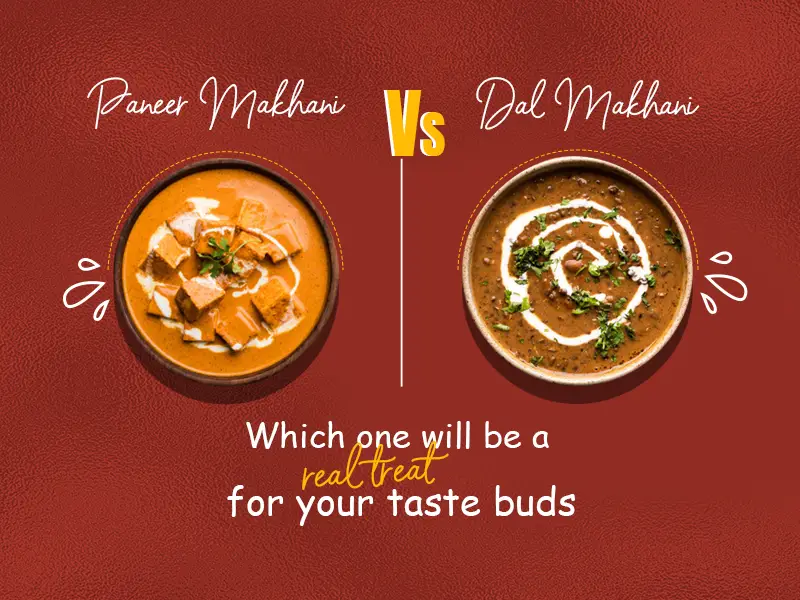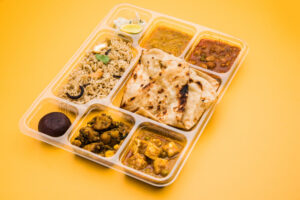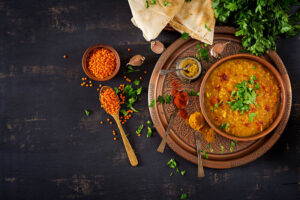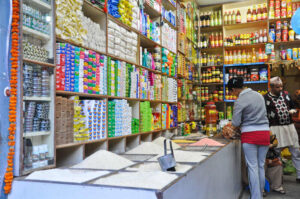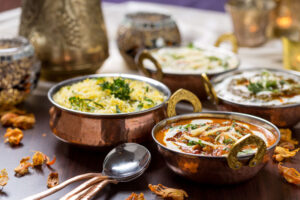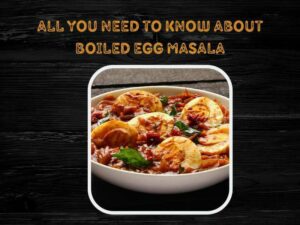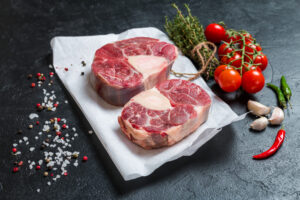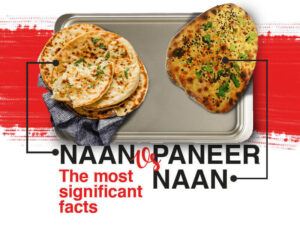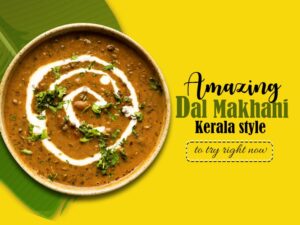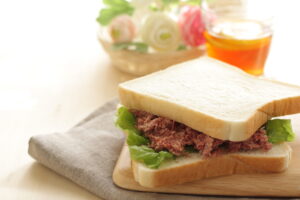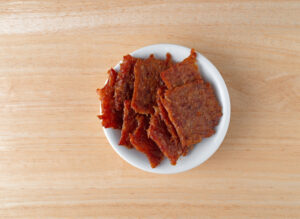What is Paneer Makhani vs Dal Makhani?
Indian food is diverse, tasty, and spicy. As many people in America have begun to relish the richness of Indian cuisine, food wars like Paneer Makhani vs Dal Makhani have emerged for the delight of those spicy taste buds.
The addition of paneer or dal gives the simple dish its unique name. While both the dishes are lip-smacking, the winner between paneer makhani vs dal makhani is decided by their key ingredients, viz. Paneer & Dal.
Paneer (also known as cottage cheese) is a dairy product that is devoured in the Indian subcontinent, especially by vegetarians. As for Dal Makhani, the main ingredient used is black lentil (urad dal) which has unique nutritional aspects.
These dishes are so appetizing that it becomes difficult to choose when they appear on the menu card. Do you want to know which one of these wins this food war? Read on for a tasty comparison!
Paneer Makhani vs Dal Makhani: Similarities and Differences
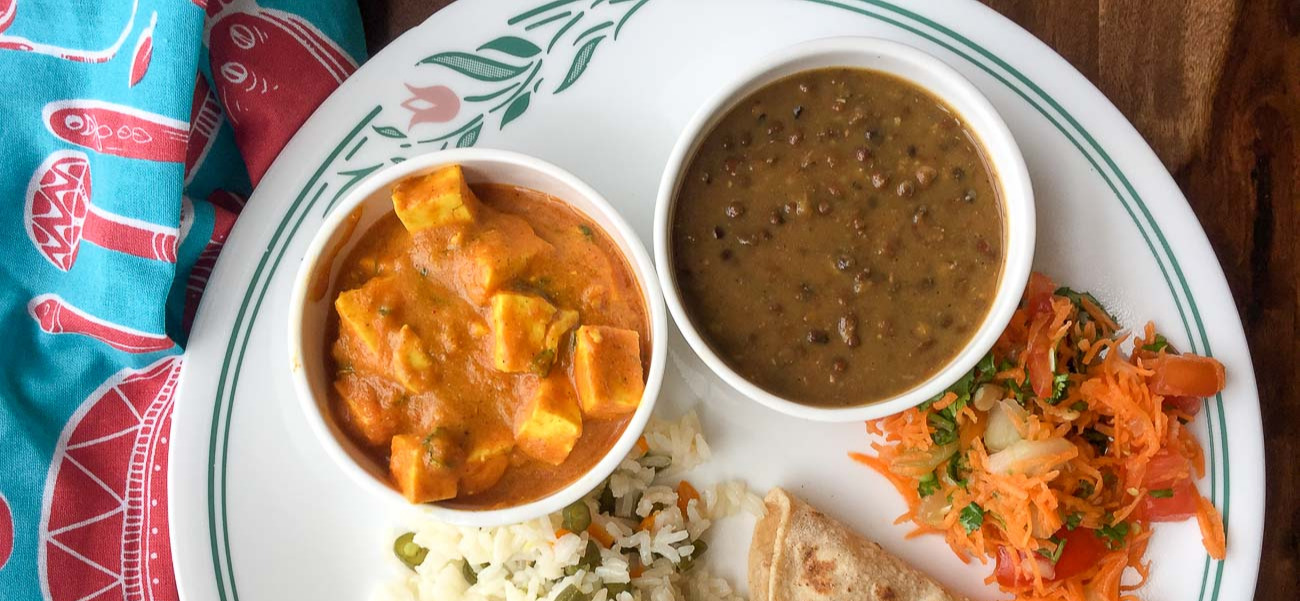
When one talks about paneer makhani vs dal makhani, it is essential to note a few main similarities & differences.
Similarities between Paneer Makhani & Dal Makhani:
- They have butter in their gravies, which is called Makhan in Hindi. Hence, these dishes are buttery and called makhani.
- Both these food dishes trace back their origins to Moti Mahal, Delhi.
- Though paneer makhani and dal makhani are modern food dishes, they were invented way back in the 1950s.
- The rich taste and excessive use of butter make both of these dishes quite filling.
- The two rockstars of Indian cuisine are mildly spicy, as they make use of coriander leaves, chili powder, bay leaf & cumin seeds and balance it with fresh cream added to them.
- Like other Punjabi gourmet foods, they are heavy in calories due to the presence of butter and, at times, cream. Paneer makhani has slightly more calories than dal makhani.
- From the nutritional perspective, both black urad dal and paneer makhani are rich in proteins as both paneer & dal are good sources of proteins.
- An important point for health-conscious folks – dal makhani and paneer makhani are rich in healthy fats due to the presence of sizable quantities of butter.
- For those who always eye on the composition chart, these dishes are also rich in calcium, fiber, phosphorus, vitamins, and minerals.
- Another quite relevant similarity is that both the food dishes have a gravy that is prepared primarily from tomatoes & onions (though onions can be skipped).
- What about optimum serving guidelines? These dishes taste best when served & enjoyed with garlic butter naan. Both the food dishes are usually served with phulka, roti, tandoori roti, rice, or pulao.
- Does the similarity list look incomplete without ingredients? The common ingredients include the likes of cream, ginger garlic paste, ghee, etc.
- Paneer and lentils when consumed in limited quantities (irrespective of preparation method), are good for weight loss.
- Both the food dishes are excellent for the enhancement of dental health (owing to the chewy nature) and heart health (thanks to the presence of antioxidants).
Differences between Paneer Makhani & Dal Makhani:
Though the main component, that is, butter is identical, there are marked differences. These Indian staple dishes have also been adopted by various American restaurants.
- Dal makhani is incomplete without the addition of kidney beans (rajma), while kidney beans (rajma) are not added to paneer makhani.
- Paneer makhani doesn’t taste well without the addition of cashew nuts (they make an essential part of the gravy). In comparison, dal makhani doesn’t require the addition of cashew nuts.
- Vegans can easily enjoy dal makhani (without the addition of milk cream and ghee) without any hassle (why?). While they have to avoid paneer makhani as the main ingredient, that is, paneer is a dairy product.
- Dal makhani takes a lot of preparation time when compared to paneer makhani. This is due to the time taken for soaking, pressure cooking, and simmering of black lentils & kidney beans.
- The color of both these food dishes is different. While paneer makhani is on a lighter tone, dal makhani has darker hues.
- The cost of preparation for paneer makhani is slightly higher than dal makhani due to the higher cost of ingredients, especially paneer & cashew nuts.
- Lactose intolerant people avoid consuming paneer makhani, as paneer contains lactose. Though lactose intolerant people can eat dal makhani (even with milk cream and ghee).
- Properly cooked paneer makhani is relatively easier to digest than (properly cooked) dal makhani. The reason behind this is that black lentils and kidney beans can cause trouble while being digested whereas paneer is relatively easier to digest.
- Dal makhani is rich in folic acid due to the presence of black lentils. Paneer makhani has negligible quantities of folic acid.
Paneer Makhani vs Dal Makhani: Recipe
Dal Makhani Recipe:
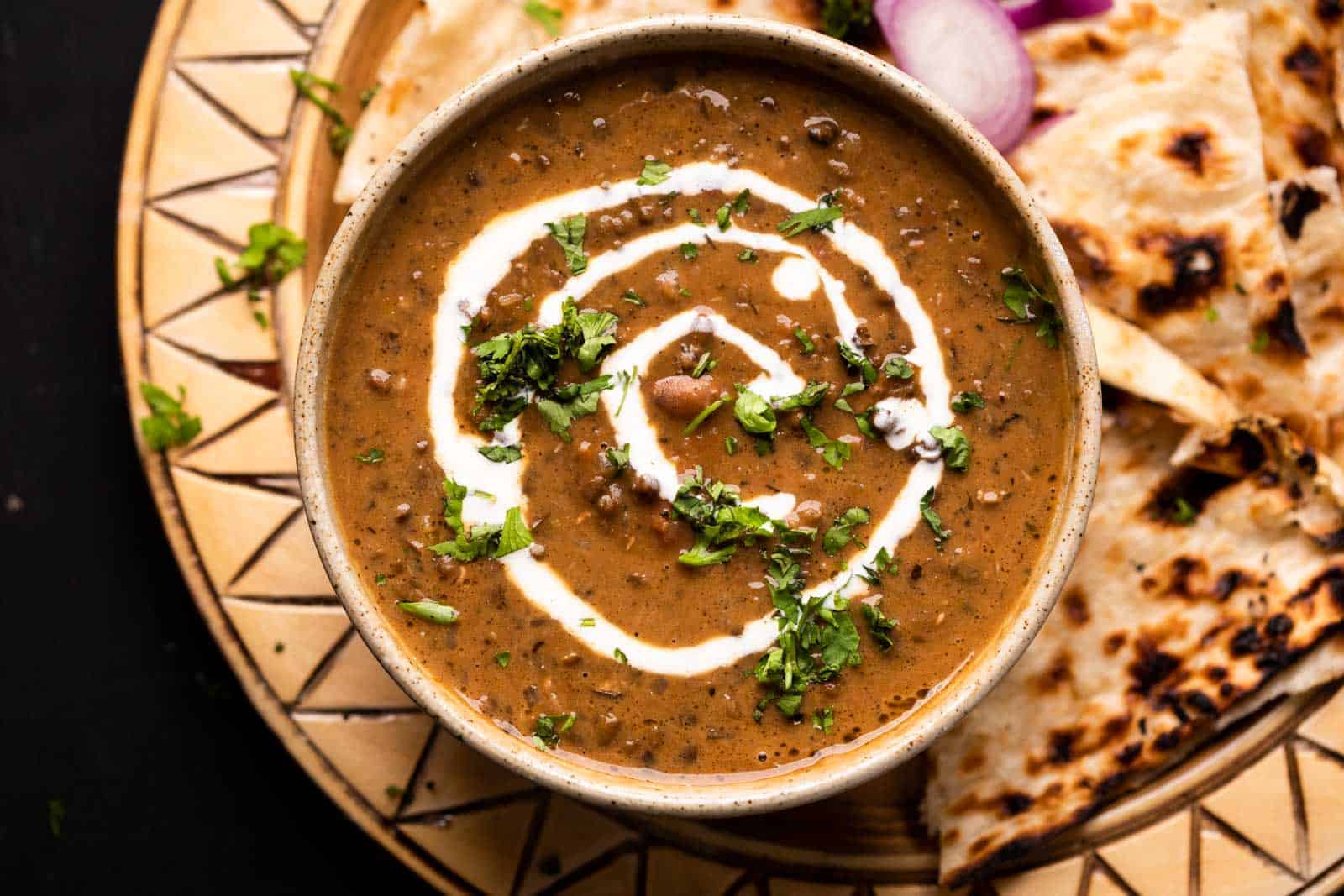
Ingredients –
- Black lentils
- Kidney beans
- Indian Garam Masala
- Spices
- Butter
- Ghee
- Onions
- Tomatoes
- Ginger and garlic paste
- Turmeric
- Chilies & chili powder
- Cream
- Coriander (or Cilantro)
Dal Makhani Recipe – Slow cooked black lentils recipehttps://t.co/cs2nHnqVDu
— Swasthi's Indian Recipes (@SwasthisRecipes) October 20, 2021
Cooking Procedure –
There are three steps for cooking dal makhani.
- Soaking & pressure cooking black lentils & kidney beans: Soak black lentils & kidney beans (1:4 ratio) in water (1:5 ratio) for at least 7 to 8 hours. Ensure that these black lentils & kidney beans are pressure-cooked well. They should be easily mashable, or else they can cause indigestion.
- Preparing the gravy: Add butter & ghee to a pan or pot. Saute tomatoes, onions, masala, ginger garlic paste, turmeric, chilies, and spices in it. (You can directly add tomato puree as well). Add water and let the gravy thicken.
- Slow cooking of dal makhani: Add black lentils & kidney beans to the pan or pot. Add salt and cream according to taste, and stir it for 90 to 110 minutes until you get proper consistency & texture. Garnish with coriander (or cilantro).
Paneer Makhani Recipe:

Ingredients
- Paneer
- Cashew nuts
- Indian Garam Masala
- Spices
- Butter
- Onions
- Tomatoes
- Ginger and garlic paste
- Turmeric
- Chillies & chili powder
- Cream
- Coriander (or Cilantro)
Cooking Procedure
There are two steps for cooking paneer makhani.
Start by adding butter and ghee into a saucepan. After 1 minute, slowly pour some tomato puree and cashew nut paste, followed by onions, ginger garlic paste, turmeric powder, chilies, and garam masala.
Then, add some water to this batter and stir until you get a gravy-like paste with acceptable consistency. Then add some paneer (can be shallow fried beforehand) while also adding butter.
Mix this mixture thoroughly and top it with some salt. Cook for 20 minutes, and your dish is ready. Garnish it with cilantro or butter and serve it hot with tandoor roti.
Hoping that this paneer makhani vs dal makhani showdown helped! Here are some other comparisons worth a look:
